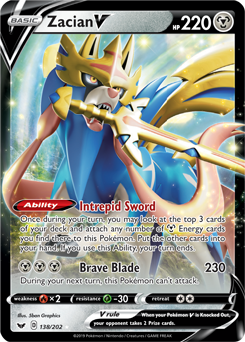The Ring of Fire — Blacephalon in the Sword & Shield Format

Hello! Today, we are, de facto, continuing our tour of classic decks updated for the Sword & Shield format.
Think about the decks you expect the most in the upcoming format; Zacian V, with or without Arceus and Dialga and Palkia-GX, probably jumps to your mind. Other easy answers are Pikachu and Zekrom-GX and Mewtwo and Mew-GX. You may also think about Morpeko V / Lillie's Poké Doll, Reshiram and Charizard-GX / Ninetales, Frosmoth / Lapras VMAX, Torkoal V / Magcargo-GX, Blacephalon-GX / Naganadel, or others. All of these decks have one thing in common: they use a Tag Team Pokemon-GX, Pokemon-GX, or V Pokemon as their main attacker (we’ll need a shortcut to include all these Pokemon so I’ll use “multi-Prize Pokemon” in this article, which I hope is clear enough). In most of the above cases, they also include multi-Prize Pokemon for support.
Multi-Prize Pokemon in the Meta
It’s not the first time in the history of the game that it looks like every deck in the format is a multi-Prize deck. However, whenever that happens, someone finds a way to make a non-Pokemon-GX (and non-EX, and non-V; I’ll call this category “one-Prize Pokemon”) deck work. In recent memory, this happened with Malamar; going back one season, decks like Zapdos / Ultra Beasts and Lost March fell in this same category. If you’ve played for at least two years, you might think of Buzzwole / Garbodor; the short-lived Yveltal / Zoroark / Gallade deck from the 2015-16 Winter season is another great example, for those of you who’ve played long enough to remember it.
Why does this happen again and again? Because one-Prize Pokemon have the ability to trade favorably with multi-Prize Pokemon. It’s not the only explanation, of course, but there’s been a lot of one-Prize Pokemon that can KO anything, as long as some constraint is met — every time this happens, someone will try to build a deck around meeting that constraint. These Pokemon tend to be frail and easily KO’d in response, but that doesn’t matter, because if you’re trading two Prize cards for one, even if your opponent takes the lead, you’ll end up the winner as long as you can take a KO every turn (with the advent of Tag Team Pokemon-GX, another form of favorable trades appeared: trading a three-Prize Tag Team for two one-Prize Pokemon. This is Malamar / Giratina‘s recipe for success).
This principle was the guiding force behind Night March. Other Pokemon able to OHKO (almost) anything include Bee Revenge Vespiquen (as long as you have enough Pokemon in the discard), Tool Drop Doublade (as long as you have enough Tools in play), and recently, Blacephalon (as long as you have enough Energy in hand). Note that all of these Pokemon can be charged up in one turn, which is crucial, otherwise you couldn’t keep trading blow for blow.
As you may have guessed, while all these decks are interesting in their own rights, and some of them are relevant in the Expanded format, Blacephalon is the deck I’m interested in today. It is a strong deck in the current metagame: after I won Bochum Regionals with it, it rose in popularity globally. But will it still be as good after Sword & Shield drops?
The answer is yes, although, like many decks, it will need to adapt. So far, we’ve seen two successful ways to build Blacephalon: with Pidgeotto, or with Green's Exploration.
Variants of the Deck
This concludes the public portion of this article.
If you'd like to continue reading, consider purchasing a PokeBeach premium membership! If you're not completely satisfied with your membership, you can request a full refund within 30 days.
Each week we post high-quality content from some of the game's top players. Our article program isn't a corporate operation, advertising front, or for-profit business. We set our prices so that we can pay the game's top players to write the best content for our subscribers. Each article topic is carefully selected, goes through multiple drafts, and is touched up by our editors. We take great pride in our program!

